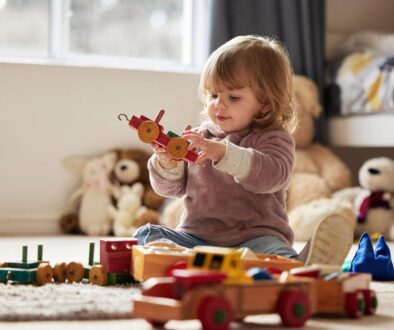Smooth Transitions

Transitions are a natural part of daily life, but change can be especially challenging for kids. Whether it’s big changes like starting school or small ones like moving from one activity to the next, transitions are hard. Using strategies for transition can help prevent meltdowns and lower anxiety in children.
10 Transition Strategies for Kids:
- Be Aware of Timing: Look for a break in your child’s activity and use that as a natural time for transition. Example: wait until your child has finished an activity before telling them it’s time to eat. If you can be sensitive to what your child is doing, they will feel respected and it can make transitions smoother for you both.
- Make It Visible: Use pictures if they aren’t reading yet. This helps a child know what they can expect and what is coming up next. It can be helpful to put the activities that your child struggles with closer to the beginning of the day when they are less tired.
- Set a Timer: Using a visual timer can help a child see exactly how much time they have left. Children do not have a concept of time, so saying “ten more minutes until we leave,” may not be very effective.
- Use a Special Object for Transitions: Sometimes, having a special blanket, doll, or stuffed animal can help ease transitions for children. When a child is transitioning from one place to another, such as from home to preschool, having a special “lovie” can be especially helpful. Consider including a small photo album or laminated pictures of close family to help support your child during these big transitions.
- Sing about it! Using a song during transitions is a great way to help kids move from one activity to the next. Kids love music. A familiar song can help them mentally prepare for the next activity or signal to them what time of day it is. You can make up your own silly song or use one that your child already knows.
- Keep Transitions Positive with Fun Activities: Whenever possible, try to make transitions fun. Example, “Let’s try hopping like bunnies to the dinner table!” or “Let’s count how many lights we see on the car ride home!”
- Don’t Rush: If you’re rushing, your child will pick up on your energy and may become even more stressed or frustrated. Don’t wait until the last minute to start the transition, give your child extra time to adjust; this can help limit meltdowns. If you are staying calm, it will help your child to stay calm.
- Give Choices When Possible: Choices can empower your child to feel part of the transition process. Example, “we have to leave in a few minutes. Which toy would you like to take with you in the car?” or “Do you want to walk to the car, or do you want to skip to the car?” Try to keep options limited and choose ones that are both acceptable.
- Be Consistent: As much as possible, try to stick with the schedule and routines that you have laid out. Routines are helpful with transitions that happen every day. Children can accept change better when they know what is coming.
- Be Patient: Remember that having to stop and transition to something else is hard for your child and that their disappointment is part of the natural process. This disappointment provides a wonderful opportunity to talk about emotions, and encourage the expression of their feelings, “I know you feel frustrated that we have to leave the park sooner than you’d like.”
Keep in mind that kids don’t have a lot of control over their lives. They often don’t get a say in what, where, when and how their day will unfold, and this can make it even more frustrating for them to have to quit something they are enjoying or transition to something new or unfamiliar.
One of the most difficult transition of the day for kids can be the one from home to school/preschool or the one from school back home. Remember that communication between you and your child as well as between you and the school is important in helping your child make these transitions as seamless as possible.
Always praise your child for handling transitions well. Let them know how good it is when you can work together as a team.





